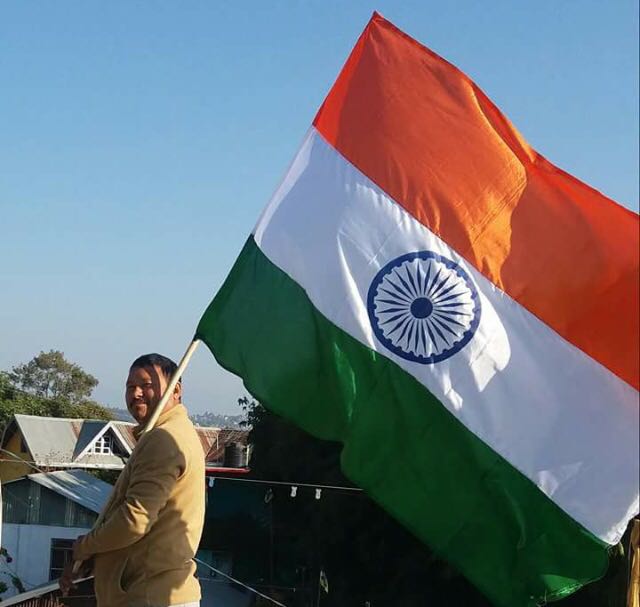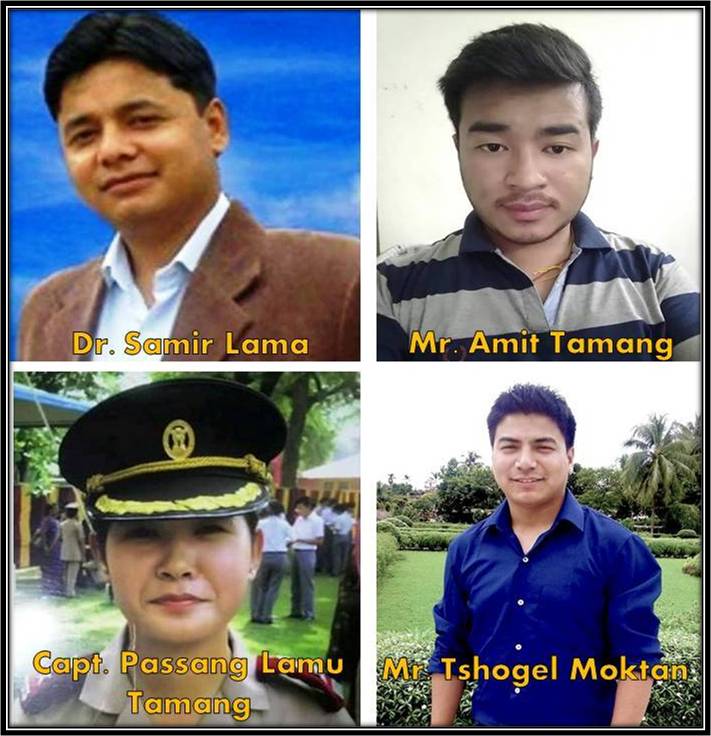Writes: Shrikanth Krishnamachary*
India became a republic in 1950. And held its first parliamentary elections in 1952. What was so momentous about this event was that a country largely illiterate and unused to democratic process transitioned to universal adult suffrage in a manner unlike any other country. Close to 80% of the Adult population in India was illiterate at the time of the first general election. And yet every Indian was given the right to vote across the country. A very very radical transition. This is in sharp contrast to say a country like UK, that was NOT a democracy throughout the 16th/17th / 18th centuries – when it had its great Industrial Revolution and managed to lift millions above mere subsistence living for the first time in human history. To put the Indian miracle into perspective, it is worthwhile to note that the United KIngdom had a franchise limited to less than 30% of its population even as late as 1914. Even in 1927, most women could not vote in UK. UK moved to 100% franchise only in 1928! This is despite the fact that UK had well over 80% literacy in 1900 – yet the franchise was under 30%, limited to men of property for the most part.
So the Indian experience was indeed exceptional. Yet how has Indian democracy fared over the past 70 years. Pretty well, as we have mostly held free and fair elections. But it is often pointed out that one party dominated power for too long despite evident non performance. While that may be true, it was largely an outcome of the parliamentary system and the “first past the post” set up. In terms of Vote share, the Indian National Congress never got a majority of votes in ANY general election. Not even in 1952.
So let’s look at how the Congress’s vote share has changed in India from 1952 to 2014 – INC vote share in 1952 was 45%. This however translated to a thumping majority of 364 seats (out of 489). The voter turnout in this election was surprisingly low at 45.7%. So the point to note is that even in the very first election where you would have thought Congress was the supreme political power and had no alternatives, 55% of Indians actually did not vote for its candidates.
In 1957, the Congress vote share actually improved to 47.8% and 371 seats. The opposition was heavily fragmented. The second largest party in both 1952 and 57 was in fact CPI – with 3.3% vote share in ’52 which improved to 8.9% in 1957! So the interesting thing to note is that in both 52 and 57 the main challenge to the Congress was not from the Right. But from the Left. The Congress party was perceived as a centrist / center-right party in those early days, despite having a rather left-wing leader in Nehru. 1957 also saw the formation of the first non-Congress government in an Indian state. Kerala saw the victory of CPI that year. A historic moment as it was the first time that Communists had won power through democratic means anywhere in the world (not counting San Marino).
In the next general election in 1962, Congress party’s vote share remained high at 44.7% (361 seats). CPI remained the second largest party with 9.9% vote share. However this year was the first time that there emerged an “Indian Right” with a decent vote share. The Swatantra party had been formed 3 years prior to the 62 election. It was arguably India’s first explicitly conservative party. The other conservative party in the fray was Bharatiya Jan Sangh founded in the early 50s. These two parties won 7.9% and 6.4% vote in 1962. So for the first time, the Congress faced opposition from not just the Left but also the Right. These two parties put together won over 14% votes. But it was unfortunate for the Indian conservative movement that Rajaji’s Swatantra and Jan Sangh never formed an alliance.
1967 was a significant election because it was the first time Congress fought the elections post Nehru’s demise. LB Shastri was a candidate chosen by internal party factions, and never led the Congress in a general election. By 1967 he had passed on, and Congress projected Indira Gandhi as its Prime ministerial candidate sidelining her conservative rival Morarji Desai. One could say that this was the elections when Congress became more explicitly a left wing party than ever before in Indian politics. What this meant was that opposition to Congress now was primarily from the Right, and not from the Left unlike earlier elections. 1967 saw further strengthing of the Indian Right with Swatantra winning 8.7% votes and Jan Sangh 9.3%. In total these 2 parties won 79 seats!
Between 1967 and the next general elections in 1971, the Congress had a split. Indira Gandhi was expelled from the party and formed her own left-wing Congress (I) as opposed to Congress (O) – a more centrist party led by the likes of Morarji and Kamaraj. However this did not hurt Indira at all in 1971. The elections put to rest speculation on which faction would emerge as the “real” Congress post split. Indira’s Congress won 43.7% of votes (352 seats), while Morarji led Congress (O) won just 10.4% of the votes (and 16 seats). In fact in 1971, a “right wing” alliance was formed – with Congress (O) of Morarji aligning with Rajaji’s Swatantra and the Jan Sangh. Yet this alliance and the first consolidation of the “Right” did not help matters. The alliance just won 24% of all votes and 51 seats. Part of the reason why the “Right” didn’t do well was because it had declined between 1967 and 71. Rajaji was now a frailer, older man. Jan Sangh too had lost Deen Dayal Upadhyaya. Its young brigade led by Vajpayee and Advani was yet to emerge forcefully on the national stage.
The intervening years had also seen Congress move firmly to the Left. WIth its Garibi Hatao slogan, populist schemes such as derecognition of princes and nationalization of banks. The Congress was now clearly a Left wing party. Unlike in 1952. This was also a period of declining political morality. Indira Gandhi was accused of electoral malpractice by the Allahabad High Court in 1975. Instead of resigning she declared an emergency and suspended the democratic process. India was not a democracy from 1975 to 1977. So the elections that were supposed to happen in 1976, did not happen till 1977, when Indira called for fresh elections. This election saw the first defeat of Congress on the national stage and the victory of the Janata Party led alliance which consolidated all non Congress votes. While it is definitely true that there was a very strong anti-Indira sentiment in 1977, one must note that Congress (I) still won 34.5% of the vote that year.
So Indira’s defeat was caused by the first “Mahagatbandhan” in Indian politics when parties as diverse as Congress (O), Jan Sangh, Swatantra, Socialist party, Akali Dal, DMK got together to consoliate the Anti Congress vote. This coalition won 345 seats and and 51.9% of votes. What’s striking about 1977 was that it was the first non-ideological alliance in Indian politics. THe first time socialists joined hands with Hindu conservatives to defeat a common enemy. This lack of ideological coherence was also ultimately the cause of its fall in 1980. The schism in this grand alliance came in 1979 when socialists withdrew support to Morarji Desai the PM – a man who was always seen as a conservative in Indian politics. Charan Singh, succeeded Morarji. But couldn’t get the requisite support. Elections were called in 1980.
In 1980 Congress roared back to power with 353 seats, 200 more than the 153 it won in 1977. This reversion to Congress happened largely because the opposition lacked the ideological coherence to stick together. The socialists and the nationalists had little in common. An interesting thing to note is that Congress vote share in 1980 was 42.7% (up from 35% in 1977) – a big increase yes. Nevertheless 57% of the people did not vote for Congress candidates. Clearly underscoring how important opposition unity is.
In 1984, Indira Gandhi was assassinated, and elections were called again, a year ahead of schedule. Rajiv Gandhi rode on a sympathy wave and Congress came back to power with 404 seats. But this “sympathy” factor is overstated by analysts.
Even in 1984, when INC won more seats than ever before or after, the Congress vote share remained BELOW 50%. It was 49.1%. The right wing faction of the erstwhile Janata Party had now morphed into the BJP – which made its debut this election – winning just 2 seats.
What’s interesting about Indian politics of this time is the decline of the Right. The RIght (comprising of Swatantra and Jan Sangh) had won over 14% of the votes back in 1967, as noted. But 17 years later in 1984, the Swatantra was dead. And the BJP won just 7.7% of votes. This period from 67 to 84 – is a dark phase in the history of the Indian conservative movement. The Right had a chastening experience in 1984. And that was when it decided to position itself more firmly and strongly with Hindu causes – a decision that changed Indian politics.
The next election was in 1989. And there was a massive shift in results. Congress won just 197 seats (down from 405), the Janata Dal (basically the left-wing faction of 1977 JP) won 143 seats and the BJP (the RW faction of erstwhile JP) won 11.4% seats with Advani at the helm. However vote shares tell you a less dramatic story. Congress actually won 39.5% of the votes in 1989. Sure, it was way below 49% won in 1984. But still by far the highest. Again it was the Gatbandhan of the LW JD and the RW BJP that kept Congress out, brought VP Singh to power. But again this was an alliance of convenience. The socialists and populists in JD had little in common with the nationalists in BJP. The govt had to fall due to its internal contradictions. Chandrasekhar was around for a while with outside Cong support. Eventually he too fell.
We had elections again in 1991. But this time Rajiv was assasinated in the last leg of campaigning. The decline of Congress continued. It got just 35.7% seats in ’91 down from 39% in 89. However its seat tally improved to 244. And it formed a minority govt with outside support.
The years between 91 and 96 saw the further strengthening ofBJP in the wake of the Ayodhya movement. But the govt in power was surprisingly stable despite being a minority govt. Credit partly has to go to PVN Rao – a conservative right-of-center Congressman. But PVN Rao’s rule did not help Congress at the hustings. In 96, the Congress slide continued. Its vote share was now down to 29% (a huge drop from 35% in 91) And it won just 140 seats. Rao’s conservative style had not worked. The Congress ditched him and turned to the left again
The BJP now was clearly the single largest party. Its vote share was just 20% in 96, yet it won 161 seats (21 more than Congress). It was kept out of power till 98 by a Cong supported left-wing coalition called United Front. But its assumption of power in 1998 was inevitable. The BJP assumed power in 1998, but was nevertheless reliant on allies to get to the majority. It was brought down by its southern allies in 1999. However a BJP led alliance re-emerged in 1999. In that year’s election BJP won 182 seats and 23.8% of votes. However it is interesting to note that the Congress managed 28% of votes (same as in 1996) even in 1999. But just got 114 seats. The story of these years was the decreasing electoral efficiency of the Congress. It became less and less good at converting votes to seats. The BJP led NDA enjoyed power under the strong leadership of Atal Vajpayee from 1998 to 2004 – a 6 year period of center-right govt unprecedented in the history of Indepedent India.
But 2004 was a remarkable election that saw a center-left alliance come back to power led by Congress against all expectations. It’s interesting to note however that Congress vote share in 2004 was just 26.7% seats (down from 28% in 99). So its decline as a party continued. Yet, there was a consolidation of votes against the BJP and not surprisingly there formed a “United Progressive Alliance” – a left wing alternative to NDA, that managed to cobble together the majority with outside support from the Left front.
In 2009 the UPA consolidated its position, and Congress arrested its decline as a party by improving its own vote share from 26% back to 28%. However in 2009 the Congress got more efficient at converting its votes to seats and ended up winning 206 seats on its own. The period from 2004 and 2014 is a 10 year long period of center-left dominance in Indian politics. Which in some ways was inexplicable. It followed a 6 year reign of a center right govt led by Vajpayee (which was perceived positively on the whole).
The lesson was learnt in 2014. It was a year of very strong anti-incumbency against a deeply unpopular UPA govt and an unpopular PM in Man Mohan Singh. The BJP rallied strongly behind Narendra Modi – inarguably the most popular Indian leader since Indira Gandhi. The outcome in the 2014 elections was remarkable. And the shift observed between 2009 and 2014 was the most radical in Indian history excepting the 1977 elections. For the first time since 1984, a single party (BJP in this case) got to 272+ seats on its own!
In terms of vote share, this was the first time a Non Congress party got over 30% seats in a general election. A remarkable milestone in Indian history. The BJP vote share in 2014 was 31%. And the Congress vote share was 19% (translating to just 44 seats). This was a HUGE shift
The increase in BJP’s vote share from 18.8% in 2009 (under Advani) to 31% in 2014 – is without a precedent in Indian electoral history. There has never been a 5 year period when any party has achieved such a stupendous rise in vote share. This remarkable transformation was attributable in large part to one man – Narendra Modi.
Yet it is sobering to note that BJP’s vote share in 2014 was still lower than what the Congress obtained in 1991 (when it formed a minority govt with 35% vote).
While the Modi govt remains extremely popular it has to be mindful of history and form alliances with prudence. As this thread on Indian electoral history shows, “Gatbandhans” have often caused the single largest party to sit in opposition several times since 1952.
This electoral history also suggests the robustness of the Indian democratic process and its durability notwithstanding the pessimism all around the world in 1952 – when few countries gave the “Indian state” any chance beyond a decade or two.
……….
*Shrikant Krishnamachary is a New York based data scientist, and the article is generated from his twitter feed, which can be read here: https://twitter.com/shrikanth_krish/status/1000735769223364608
We have re-published this article with the intent and hope that our people will learn about how elections have shaped up our government systems and democracy over the years.






Leave a comment